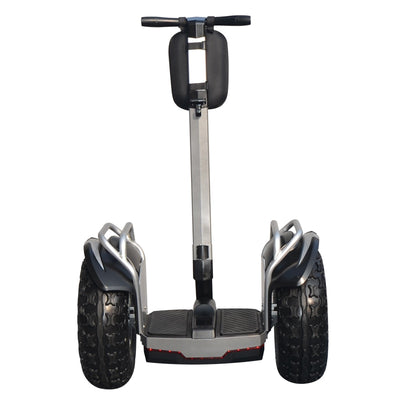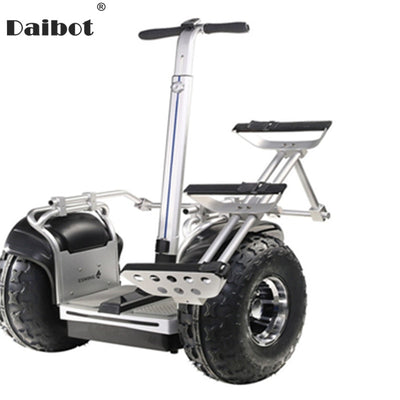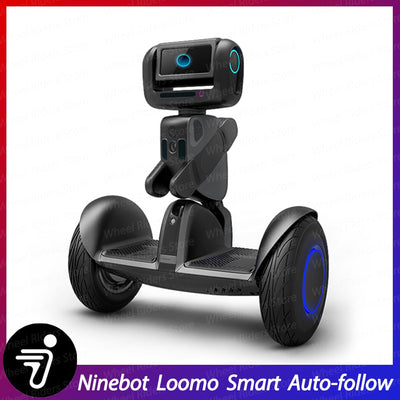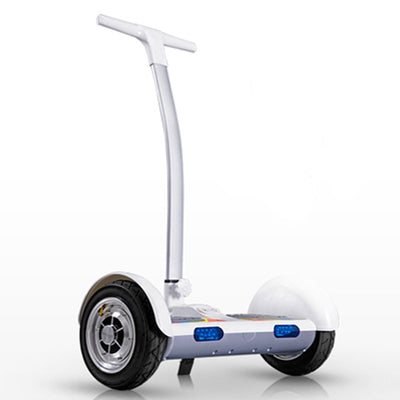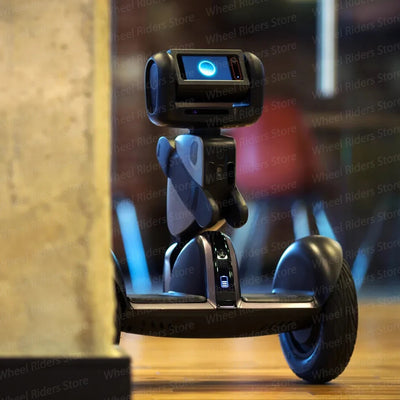Well, That Didn't Work: The Segway Is a Technological Marvel. Too Bad It Doesn't Make Any Sense
Posted by Tom Lee on
WE WERE ALL supposed to be riding Segways by now. The company was supposed to be rolling in cash, the scooter's inventor a modern day Jay Gatsby (minus the bootlegging and murder). It didn't happen: Today, the Segway is a punch line, a way for mall security guards to prevent sore feet. So what happened?
It's not that it didn't work: Envisioned as a way for people to get from home to work in urban areas, the Segway is a technological marvel. It can maintain its balance better than a human and is much more fuel efficient than a car, which are a pain to drive and park over a short journey. No, the problems that sank the Segway weren't technological. They were social.
Dean Kamen, the self-balancing scooter's inventor, nicknamed it "Ginger" after Fred Astaire's musical partner Ginger Rogers. Kamen's previous invention, a robotic wheelchair that could climb stairs was nicknamed Fred Upstairs. Before it launched, the Segway was said to revolutionize the way cities are laid out and how people get around them. Venture capitalist John Doerr predicted it would reach $1 billion in sales faster than any company in history, and that it could be bigger than the Internet. Kamen expected to be selling 10,000 units a week by the end of 2002—that's half a million a year. In the next six years, Segway sold just 30,000 units, according to Forbes.
The Segway Personal Transporter was publicly unveiled on Good Morning America in December 2001 with early units priced around $5,000—what you'd pay for a decent used car. When a rider steps on, on-board computers, sensors and motors keep it upright. The rider commands the scooter by shifting his weight forward or backward, and steers by pushing handlebar left or right. It works beautifully and the technology is impressive.
"When I first got it, it was so much fun," says entrepreneur Peter Shankman, one of the first five people in New York City to buy one. "But the police didn't know what to do with it." Shankman says that on one block he'd be told to get on the sidewalk, while on another he'd be told to get in the street. Sometimes he was told he couldn't use it at all.
In the book Code Name Ginger, written about the launch of the Segway, author Steve Kemper quotes Amazon's Jeff Bezos who, along with Steve Jobs, was asked to critique the product before its launch. "I think this plan is dead on arrival," Bezos said. "The USA is too hostile." That the product was so revolutionary, he said, "you'll have no problem selling it." This was true, to a point. Early adopters like Shankman and Apple cofounder Steve Wozniak were eager to pick one up. The key point, as Bezos accurately predicted, was: "Are people going to be allowed to use it?"
The Segway worked as advertised, but it was awkward to use. It was small enough to ride inside a building or into an elevator, but at 100 pounds, it was too heavy to carry up stairs. It also required the rider to be "that guy" (and it was almost always a guy), rolling his electric scooter around the lobby and corridors of his office building. And then you need to park it.
It's hard enough to get cities to embrace the bicycle, something that's been around for a century and a half, and to design their streets around it. And, though many bikers look ridiculous in their skin-tight racing outfits, at least they're getting a workout. The Segway was perhaps the laziest mode of transportation around. "People just didn't know what to make of it," says Shankman. "Every time I used it, I just wound up feeling fat. I got called lazy more times than I could count." Not a good recipe for success. Like the troubled Google Glass, another supposedly "revolutionary" product, the Segway invited mockery, not awe.

President Bush, center, momentarily loses his balance while riding a segway personal transporter in Kennebunkport, Maine, Thursday, June 12, 2003.
Steve Jobs warned Kamen the Segway's image could be ruined by a single rider falling off and hurting themselves. Three high profile incidents soon followed: In 2003, President George W. Bush fell off a Segway during a vacation at his family's compound in Kennebunkport, Maine. The fall was caught by press photographers and widely reported. British journalist Piers Morgan broke three ribs after he fell off a Segway in 2007. More tragically, James W. Heselden, the owner of the Segway corporation, was killed after he accidentally steered his scooter off a 30-foot cliff and into a river in 2010.
As a personal transporter, the Segway was a near complete failure. It just doesn't make much sense: It's expensive, heavy, and silly. But it has found a measure of success in industrial and fleet applications where employees are on their feet or moving around a lot, something that makes a lot more sense than personal ownership. Police departments (who have special versions with sirens and strobe lights!), tour groups, warehouse workers, mall security guards, and airport maintenance staff have all adopted the Segway. It's possible that the aforementioned Google Glass will see more success in similar commercial applications as well.
However, for a device that was said to have cost more than $100 million in research and development, it's impossible to call the Segway anything but a dud.
"The technology was awesome," says Shankman. "The world just wasn't ready for it."
- Tags: personal transporter

